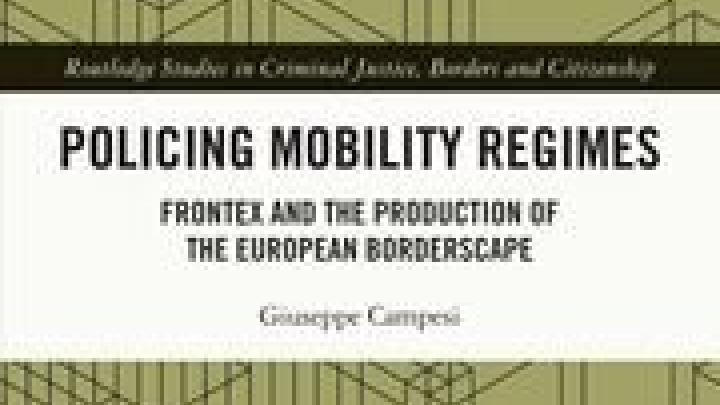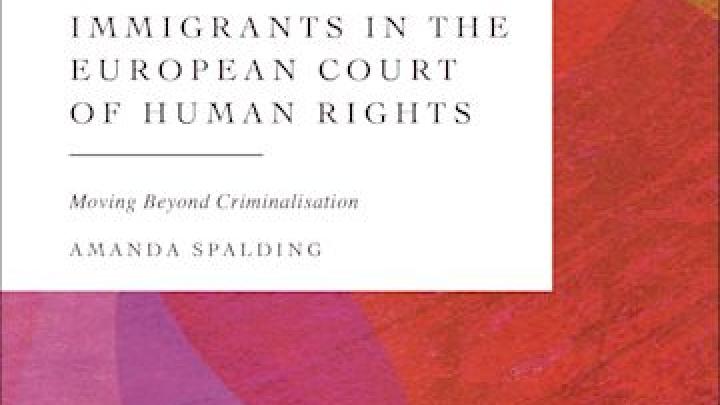Book Review: Governing Borders and Security: The Politics of Connectivity and Dispersal
Posted
Time to read
Guest post by Justin Strong. Justin holds an MSc in Criminology from Northern Arizona University. His research examines the interrelationship between incarceration and citizenship in the US. Other interests include feminist methodology, social movements, and abject theory. Justin is on Twitter @jstrong2x5.
Review of Governing Borders and Security: The Politics of Connectivity and Dispersal, edited by Catarina Kinnvall and Ted Svensson (PRIO New Security Series, Routledge, 2014).

One of the strongest contributions offered by the volume is its discussion of the securitization of human rights. First, Mark Bevir’s chapter ‘Joined-Up Security’ accounts for the ways in which social and economic insecurities have been (re)articulated as threats to human security. Likewise, these threats have been approached through network strategies between states, NGOs, and local actors. Of importance here is how human securitization and networked governance corroborate in humanitarian intervention and state building.
Understanding humanitarian intervention as an outcome of joined-up security segued nicely into Tugba Basaran’s chapter on humanitarianism under conditions of security. Basaran furthers the understanding of joined-up security networks by demonstrating how governments in tandem with NGOs authorize suffering and humanitarianism. Basaran moves beyond problematizing humanitarian efforts by detailing the liberal nation-state’s function in defining which suffering is innocent, and thus worthy of help. Such a position echoes Judith Butler’s theorization on when life is grievable.
Furthermore, Katherine Allison’s chapter, ‘Border Thinking and the Women, Peace and Security Agenda’ (WPSA), scrutinizes how heterogeneous forms of global governmentality transverse the liberal/non-liberal boundary. Here, Allison undergoes a project of border thinking by analyzing how the WPSA extends liberal forms of governance into supposedly non-liberal spaces. In relation to the securitization of human rights, she points to women’s rights in Afghanistan as a contested site of liberalism, global governmentality, and security. Although the security of women’s rights in Afghanistan has been used to justify US interventions as a means for liberal state building, women in Afghanistan have taken action themselves in advocating for and installing their own liberal institutions. Here, Allison’s major assertion is that the liberal/non-liberal divide is itself a project of liberalism. Taken together, the three chapters craft an analysis of a human rights regime, wherein global securitization strategies converge through discourse and governance of suffering and victimization.
Anthony Cooper and Chris Perkin’s chapter, ‘Mobile Borders/Bordering Mobilities,’ focuses on the scattering of bordering practices into everyday life. The chapter contends that the practice of ‘bordering’ has become less concerned with territory and more focused on mobile subjects. In the effort to track and manage mobility, however, borders have been diffused across space, becoming ‘un-border-like’ in the process. As bordering has proliferated, dispersed borders face a weakening in their status function and can thus be subject to increased forms of resistance.
Moreover, as bordering and securitization have become diffused, they also have varied impacts upon identity formation. Within increased border(ing) regimes, people must constantly navigate and make meaning of their own political position. Paul Nesbitt-Larking’s chapter on alternative narratives of citizenship analyzes the psychological dimensions of belonging and membership, identification with political communities, and practices of citizenship amongst young Muslims in Canada. Nesbitt-Larking moves away from overt acts of resistance in regards to citizenship and instead investigates what can be called quiet agency, that is, the everyday subtleties of conformity and resiliency. An important takeaway of his research is the complexity of lived experience and circumstances within citizenship practices. For example, while participants attached similar meanings to citizenship, such as loyalty and political involvement, there were stark differences in how these meanings positioned participants’ understanding of self.
Whereas Nesbitt-Larking examined the subtleties of citizenship practices, Maria Rovisco’s chapter investigates the ways in which community arts projects allow forced migrants to participate in an emancipation politics of desecuritization. According to Rovisco, community arts and digital media foster the social relations necessary to sustain new projects of citizenship, representation, and storytelling. Although this can be very empowering and inclusive for forced migrants, Rovisco questions the emancipation of these projects, addressing the specific strategy of storytelling which can promote an aesthetic of injury and isolate forced migrants as depoliticized victims of unfortunate circumstances. She forwards an inclusive view of citizenship, claiming that desecuritization projects unsettle the state’s bordering of who and who does not belong. The work doesn’t establish, however, how such an analytic moves beyond the paradox of citizenship as an inclusionary/exclusionary status. Here, Dylan Rodriguez’s book Forced Passages can provide an alternative interpretation of political acts by mobile subjects. In his work, Rodriguez argues that political prisoners inhabit a space of radical activism that displaces US understandings of civil rights and constitutes insurgent alternatives to political membership. In drawing a parallel with Rodriguez’s theorization, I’m encouraged to interpret the political acts of mobile subjects as displacing or transcending citizenship as a political status.
The last two chapters of the volume open up discussion on the relationship between imaginaries, borders, and regions. ‘In Bordering the Indefinite Nation,’ authors Catarina Kinnvall and Ted Svensson provide a nuanced analysis of how religion can become securitized. In the case of Pakistan, the securitization of Islam has occurred in two distinct yet interrelated ways. First, the government, military, and militant groups within Pakistan have drawn upon Islam to border fragmented group identities. Second, narratives of Pakistan as a frontier state in the war on terror and as a region of crumbling governance have securitized Islam as a threat to geographical borders.
Annika Bergman-Rosamond and Ben Rosamond’s chapter shows how the Arctic has become securitized through nation-states attempting to border the region. Here, the analysis situates conflicting potentialities for the Arctic. On one hand, the authors identify a scramble for the Arctic that reifies Westphalian geopolitics. On the other hand, the chapter proposes to desecuritize the Arctic through transnationalist solidarity with First Nations peoples in the region. While the authors call for a civic cosmopolitanism referencing the knowledge and relationships of indigenous groups, their own imaginary of the region remains bordered by institutionalist forms global governance, such as constitutional recognition and sovereign self-determination.
An interdisciplinary volume, Governing Borders and Security gives readers an excellent purview of scholarship that critically engages securitization and the governance of mobility. The book’s importance shines through most in its interrogation of bordering, wherein processes of inclusion and exclusion are rendered of their permeability.
Any comments about this post? Get in touch with us! Send us an email, or post a comment here or on Facebook. You can also tweet us.
__________
How to cite this blog post (Harvard style):
Strong, J. (2015) Book Review: Governing Borders and Security: The Politics of Connectivity and Dispersal. Available at: http://bordercriminologies.law.ox.ac.uk/governing-borders-and-security/ (Accessed [date]).
Keywords:
Share
YOU MAY ALSO BE INTERESTED IN
With the support of









